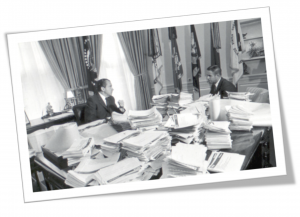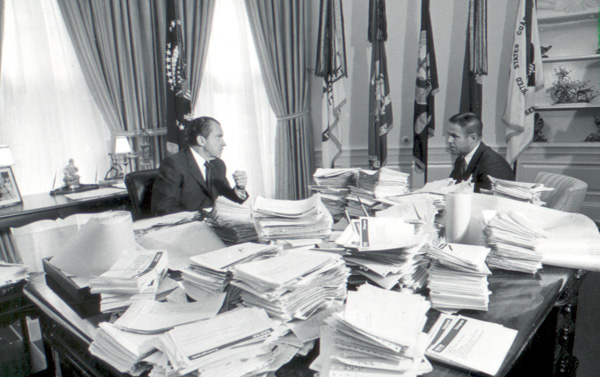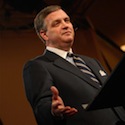 Last year on President”™s Day, Kelly and I took a trip down to Yorba Linda and the Richard Nixon Library and Foundation. Admission was free, so we joined some 5,000 other people taking advantage of the opportunity. The highlight of the day was the panel lecture on “The Effective Use of the President”™s Time.” The panel was made up of four men who served in the West Wing of the White House and, more specifically, worked directly under H. R. “Bob” Haldeman, Nixon”™s Chief of Staff. They discussed the climate of which Nixon assumed the presidency, how foreign trips were staffed, and most importantly, how they helped the President make the best use of his time.
Last year on President”™s Day, Kelly and I took a trip down to Yorba Linda and the Richard Nixon Library and Foundation. Admission was free, so we joined some 5,000 other people taking advantage of the opportunity. The highlight of the day was the panel lecture on “The Effective Use of the President”™s Time.” The panel was made up of four men who served in the West Wing of the White House and, more specifically, worked directly under H. R. “Bob” Haldeman, Nixon”™s Chief of Staff. They discussed the climate of which Nixon assumed the presidency, how foreign trips were staffed, and most importantly, how they helped the President make the best use of his time.
Nixon”™s end is usually where we begin in thinking about his time in office and tends to dominate the flavor of the entirety of his presidency. That is unfortunate. Many, initiatives, policies, and governmental advancements that remain in place today were initiated during his years in the White House. In fact, the entire structure of the modern day Office of the President was essentially created during his tenure and remains in tact today. The lecture was a fascinating look into the Presidency.
Today and Friday I”™ll post my bulleted notes from the lecture. On Saturday, I”™ll give a few thoughts on how these themes could bring helpful consideration to an ordinary pastor”™s ministry.
- Nixon was friendly, but we were not friends.
- Nixon lost the 1960 election because he tried to run the campaign himself. In 1968 (the year he won the Presidency), he put key managers in every position.
- Haldeman issued a memo in the 1968 campaign that became central to how the Presidency. Because of the greater use of television, it was not as important for the candidate or President to make multiple public appearance. The 30 second sound-bite for the evening news became more important. Haldeman said, “The candidate and the press must be given time to stop, rest, reflect and write.”
During President Nixon”™s time in the White House, he secured an office across the street from the White House in the Executive Office Buil ding, where he would take a 40 minute power nap (suggested to him by President Lyndon Johnson who was renown for his unflagging energy through each day), eat lunch, think, and write. Many of Nixon”™s major speeches and agendas were planned out during these times.
- Working in the White House is 100% intensity. Everything matters, or it would have been handled somewhere else. Everything is important and has consequences.







